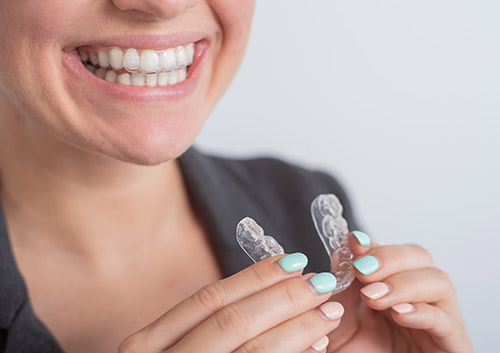May is National Teen Self-Esteem Month!
May 3rd, 2023

The month of May has the unique distinction of being National Teen Self-Esteem Month. What does that mean?
National Teen Self-Esteem Month was created to raise public awareness about how low self-esteem can negatively affect teens. Especially during May, parents and guardians of teens are asked to be positive role models. If teens can receive positive re-enforcement and their negative images of themselves are improved, then their self-esteem has a better chance of developing in a positive direction.
Dr. Pope and our team at Orthodontic Associates, LTD. know there are a lot of young adults living in America are struggling with depressed self-images. These can affect all aspects of their everyday lives. Some evidence shows learning abilities and increased risk of eating disorders can originate in a teen’s low self-esteem. It can also lead to abuse of drugs and thoughts of suicide. Dating violence among high school teens is now more common than previously thought.
What can be done to help?
So what can adults do specifically to help their teens? The National Teen Self-Esteem Facebook page offers a variety of suggestions and positive messages for teens and parents alike. Of all the pages your teen “likes” on social media, perhaps he or she should include this page. Some of the tips offered include:
- When you stumble, get right back up.
- Don’t compare yourself to anyone else.
- Do things that make you feel good about yourself.
- Open yourself up to compliments.
Another great way to build self-esteem is to have a beautiful, health smile, and that’s where our team at Orthodontic Associates, LTD. come in! Whether your teen is due for a simple cleaning, could benefit from cosmetic treatments, or needs orthodontic care, we can help bestow a confident smile he or she will be proud to show off.
Overall, a more positive approach to life will help us all. It is a very important trait to instill in our teens. As parents, a big part of our responsibility is to show our children there is always another day and bumps in the road are just that. We need to help guide their self-esteem and reinforce their positive traits. We can help them recognize the value of who they are.
We should make our children’s self esteem a priority — not just in May, but throughout the year. Let National Teen Self-Esteem Month serve as the impetus for new levels of self-esteem.
For more information on this topic, or to schedule an appointment with Dr. Pope, please give us a call at our convenient Flossmoor and New Lenox, IL office!





 Website Powered by Sesame 24-7™
Website Powered by Sesame 24-7™